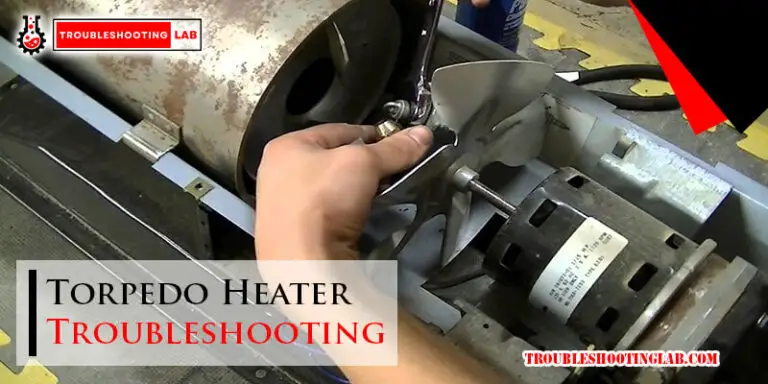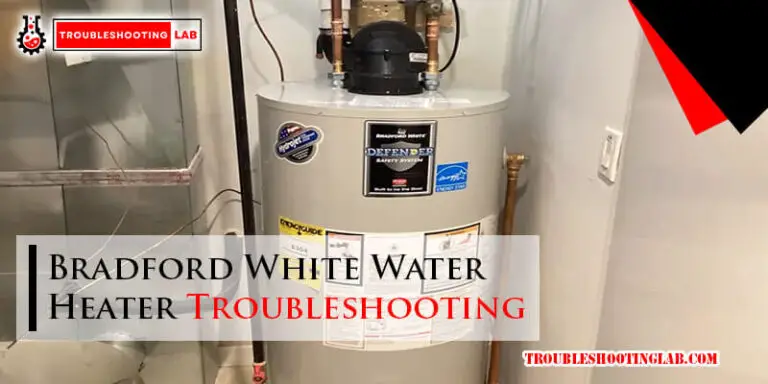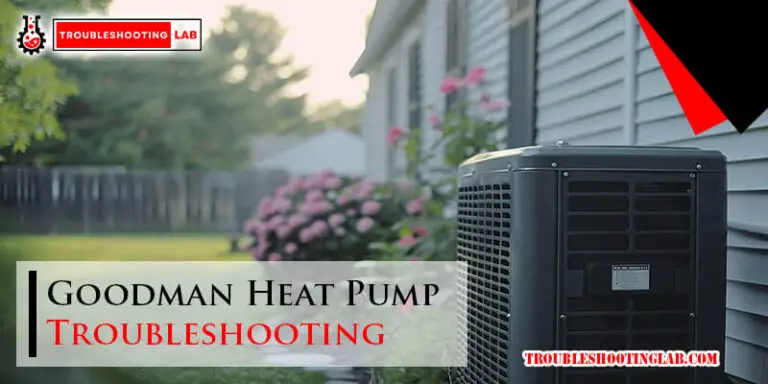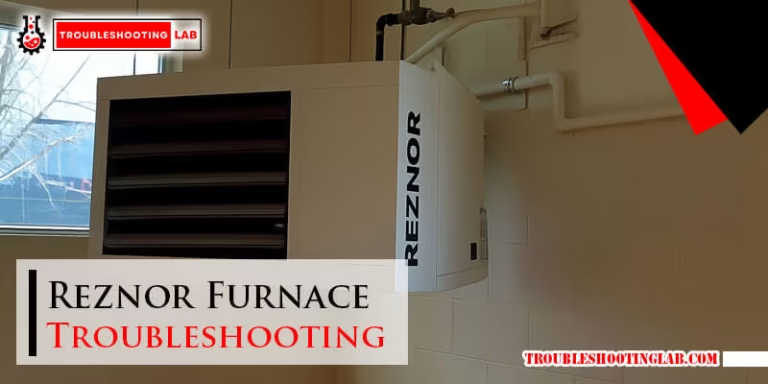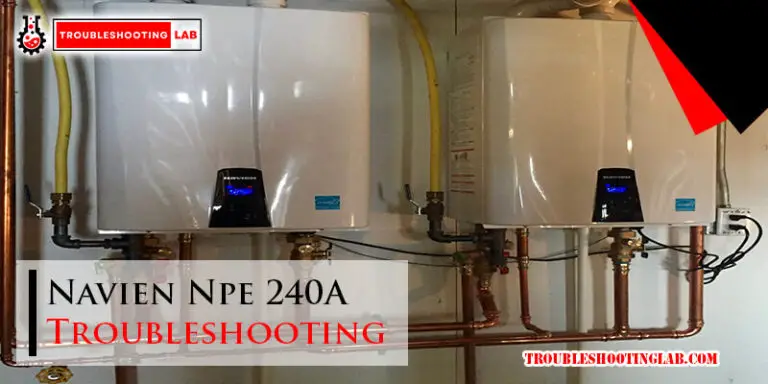Rheem Performance Platinum Water Heater Troubleshooting Tips
Is your Rheem Performance Platinum water heater acting up? Don’t worry—you’re not alone.
When your water heater starts to misbehave, it can feel frustrating and overwhelming, especially when you’re left with cold showers or unexpected leaks. But here’s the good news: most common issues can be fixed without calling in an expensive repair service.
In this guide, you’ll discover simple troubleshooting tips to get your water heater back on track. Whether it’s inconsistent water temperatures, error codes, or strange noises, we’ll walk you through the solutions step by step. By the end of this article, you’ll feel confident tackling the problem and saving yourself time, money, and stress. Ready to restore your hot water and peace of mind? Let’s dive in!
Common Issues
When your Rheem Performance Platinum water heater acts up, it can quickly disrupt your daily routine. From cold showers to strange noises, these issues can be frustrating. But the good news is, most problems are common and can be addressed with a little troubleshooting.
No Hot Water
If your water heater isn’t producing hot water, the culprit might be a tripped circuit breaker or a pilot light that’s gone out. Check your home’s breaker panel first and reset it if necessary. For gas models, inspect the pilot light and relight it if it’s off.
Still no luck? The heating element could be faulty. Replacing a heating element is a straightforward task, but if you’re not comfortable doing it, a technician can help. Always ensure the unit is powered down before attempting any fixes.
Inconsistent Water Temperature
Does your water swing from hot to cold unpredictably? This could be due to sediment buildup in the tank. Over time, sediment can collect and insulate the heating elements, making it harder for the water heater to maintain consistent temperatures.
Draining and flushing the tank can solve this problem. It’s a simple maintenance task you can do annually to keep your unit running smoothly. Make sure to follow the manufacturer’s guidelines to avoid damaging the tank.
Water Leaks
Water pooling around your heater is a clear sign of trouble. Leaks often stem from loose connections or a damaged pressure relief valve. Tighten the connections first to see if that solves the issue.
If the leak persists, inspect the pressure relief valve. Replacing it is usually a quick fix. However, if the tank itself is leaking, you’ll likely need a replacement water heater.
Unusual Noises
Hearing popping or rumbling sounds from your water heater? This is often caused by sediment buildup at the bottom of the tank. When the heating element warms the sediment, it creates those noises.
Flushing the tank can eliminate the sounds and improve efficiency. If the noise continues, the heating element might be failing and may need to be replaced. Don’t ignore these sounds—they’re often an early warning of bigger problems ahead.
Have you faced any of these issues with your Rheem Performance Platinum water heater? Taking prompt action can save you from larger repairs down the road. What’s your next troubleshooting step?
Error Codes And What They Mean
Rheem Performance Platinum water heaters are reliable, but error codes may appear. These codes help diagnose problems efficiently, saving you time and effort. Understanding their meaning can assist in troubleshooting or deciding the next steps.
Whether it’s a minor issue or something serious, knowing how to interpret error codes is crucial. This section explains how to identify error codes, reset the system, and when professional help is necessary.
Identifying Error Codes
Error codes are displayed on the water heater’s control panel. They often consist of letters and numbers. Each code corresponds to a specific problem or malfunction.
For example, “E1” might indicate a sensor issue, while “E5” could signal an overheating problem. Refer to the user manual for detailed descriptions of each code.
If you see an error code, take note of it before proceeding. This information will help you determine the right troubleshooting steps.
Resetting The System
Resetting the water heater can clear minor errors. To reset, turn off the power to the unit. Wait a few minutes before turning it back on.
Sometimes, simply resetting the system resolves the problem. If the error code reappears, it may indicate a persistent issue that needs further attention.
Always follow the instructions in the user manual during a reset to avoid mistakes.
When To Call A Technician
Some errors require professional expertise to fix. Persistent error codes or unusual noises often signal deeper problems.
If resetting doesn’t solve the issue, contact a certified technician. They can inspect the unit and address complex malfunctions.
Attempting repairs on your own without proper knowledge can cause damage. Professional help ensures your water heater operates safely and efficiently.
Basic Maintenance Tips
Regular maintenance can extend the life of your Rheem Performance Platinum water heater and keep it running efficiently. Neglecting it, however, could lead to costly repairs or a sudden loss of hot water. With just a few simple steps, you can ensure your water heater stays in top shape for years.
Flushing The Tank
Over time, sediment builds up at the bottom of your water heater tank. This can reduce efficiency and even cause damage. Flushing the tank once a year removes this buildup and keeps the system running smoothly.
To flush the tank, turn off the power supply or gas valve and let the water cool. Attach a garden hose to the drain valve and direct the other end to a safe drainage area. Open the valve and let the water flow out until it runs clear. Close the valve, remove the hose, and refill the tank. Don’t forget to turn the power or gas supply back on!
Ever notice your hot water taking longer to heat? That’s often a sign of sediment buildup. Flushing the tank is a quick fix that can restore efficiency almost immediately.
Checking The Anode Rod
The anode rod is a critical component that protects your tank from rust. It attracts corrosive elements in the water, sacrificing itself to preserve the tank’s integrity. But if the rod deteriorates completely, the tank becomes vulnerable to rust and leaks.
Inspect the anode rod every 2-3 years. To do this, turn off the water heater, let it cool, and unscrew the rod from the top of the tank. If it’s less than half an inch thick or coated in calcium, it’s time to replace it. Replacement rods are affordable and can save you from expensive tank repairs.
Did you know replacing the anode rod can add years to your water heater’s life? It’s a small effort with big rewards.
Inspecting The Pressure Relief Valve
The pressure relief valve is a safety feature that prevents the tank from over-pressurizing. If it’s faulty, it could lead to dangerous leaks or even an explosion. Testing it annually ensures it’s working as intended.
To test the valve, place a bucket under the discharge pipe and lift the valve lever. You should hear a rush of air or see water draining. If nothing happens, the valve may be stuck and needs replacing. Always replace a faulty valve immediately to avoid potential hazards.
Have you ever thought about how much pressure builds up in your water heater? A quick check of the relief valve can give you peace of mind and keep your home safe.
These basic maintenance tips don’t take much time, but they can save you from headaches down the road. When was the last time you gave your water heater some attention? It might just be the perfect time to start.

Credit: www.youtube.com
Electrical Component Checks
When your Rheem Performance Platinum water heater isn’t working as it should, electrical issues are often the culprit. Checking the electrical components can save you time and money before calling in a professional. Don’t worry—it’s simpler than it sounds. Let’s walk through some essential steps to troubleshoot the heating elements, thermostat, and wiring.
Testing The Heating Elements
The heating elements are the heart of your water heater. When they fail, you’ll likely notice lukewarm or cold water. To test them, you’ll need a multimeter.
- Turn off power to the water heater at the breaker box to avoid any electrical hazards.
- Remove the access panel and insulation to expose the heating element terminals.
- Set your multimeter to the “ohms” or resistance setting and touch the probes to the terminals.
A working heating element will typically show a reading between 10 and 30 ohms. A reading of zero or infinity means the element is faulty and should be replaced. Have you checked your heating elements lately?
Inspecting The Thermostat
If your heating elements are fine, the thermostat could be the issue. A malfunctioning thermostat can disrupt the water temperature, making it too hot or too cold. Here’s how you can inspect it:
- Ensure power is still off at the breaker.
- Locate the thermostat behind the same access panel as the heating elements.
- Using a multimeter, test for continuity to see if the thermostat is functioning properly.
If the thermostat fails the continuity test, it’s time for a replacement. While you’re at it, double-check the temperature setting—it should usually be around 120°F for safety and efficiency. Did you know setting it too high can increase your energy bills?
Ensuring Proper Wiring
Loose or faulty wiring can stop your water heater from performing. Over time, wires may wear out or connections may loosen due to heat and vibration. A quick inspection can reveal if this is the problem.
- After turning off the power, examine all visible wiring connections.
- Look for loose screws, burnt wires, or any signs of damage.
- Tighten loose connections and replace damaged wiring as needed.
Even a small issue like a loose wire can cause big problems. If you’re not comfortable working with electrical wiring, calling an electrician is a safer bet. Wouldn’t you rather fix a small problem now than face a complete breakdown later?
Troubleshooting electrical components might feel intimidating, but it’s manageable with the right tools and a bit of patience. Start small, work carefully, and your Rheem Performance Platinum water heater will be back to providing hot water in no time.
Gas Water Heater Troubleshooting
Gas water heaters are reliable but can occasionally face issues. Troubleshooting common problems ensures your Rheem Performance Platinum water heater runs smoothly. This guide addresses frequent issues like the pilot light, gas supply, and burner assembly.
Pilot Light Won’t Stay Lit
The pilot light is essential for igniting the burner. If it doesn’t stay lit, check the thermocouple. This small component detects heat from the pilot. A dirty or damaged thermocouple may block the gas flow.
Inspect the pilot tube for clogs. Dirt or debris inside the tube can interrupt the flame. Use a needle or compressed air to clear it gently. Confirm the gas control valve is set to “pilot” mode. This ensures proper gas flow to ignite the flame.
Checking The Gas Supply
A disrupted gas supply can halt heater operations. Start by verifying the gas valve is fully open. Partial openings limit the flow needed for combustion.
Inspect the gas line for leaks or damage. A hissing sound or gas smell signals a leak. Turn off the gas and contact a professional. Ensure your gas meter has an adequate supply. Low pressure often affects the heater’s performance.
Inspecting The Burner Assembly
The burner assembly heats the water inside the tank. Dirt or rust buildup can reduce efficiency. Remove the burner and clean it with a soft brush or cloth.
Check for cracks or worn-out parts. Replace damaged components to maintain proper function. Ensure the burner aligns correctly with the pilot light. Misalignment prevents ignition and heating.
If issues persist, consider contacting a certified technician for inspection.
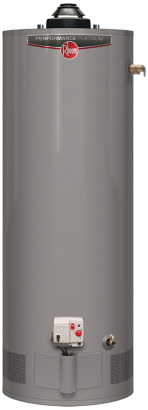
Credit: www.rheem.com
Preventive Measures
Keeping your Rheem Performance Platinum water heater in top shape isn’t just about fixing issues when they arise—it’s about preventing them in the first place. Simple, proactive steps can save you from unexpected cold showers and costly repairs. Let’s dive into some practical preventive measures that will keep your water heater running smoothly for years to come.
Setting The Right Temperature
Did you know that setting your water heater temperature too high can lead to wear and tear? Ideally, the thermostat should be set to 120°F (49°C). This temperature is hot enough to kill bacteria but not so high that it stresses the unit or risks scalding.
Check your water heater’s manual for instructions on adjusting the temperature. If you’re unsure, a quick call to a professional can ensure it’s done correctly. Overheating is a common cause of early breakdowns, so this small step can save you big headaches down the road.
Installing A Water Softener
Hard water can be a silent enemy for your water heater. Minerals like calcium and magnesium build up inside the tank, reducing efficiency and lifespan. A water softener helps prevent this by filtering these minerals out before they reach your heater.
If you’ve ever noticed white residue on your faucets or dishes, it’s a sign you might need a water softener. Installing one not only protects your water heater but also improves the quality of your water. Think of it as an investment in your appliance’s long-term health.
Regular Inspection Schedule
How often do you inspect your water heater? If your answer is “rarely” or “never,” it’s time to change that. A quick visual check every few months can help you catch leaks, rust, or other issues before they become major problems.
Make it a habit to drain and flush your tank annually to remove sediment. This simple task can improve efficiency and extend the life of your unit. Set a reminder on your calendar—you’ll thank yourself later when your water heater runs like a champ for years longer than expected.
What preventive measures do you already take for your water heater? If the answer is none, now’s the perfect time to start. These small changes can make a big difference in avoiding costly repairs or replacements.
When To Replace The Unit
Knowing when to replace your Rheem Performance Platinum water heater is crucial. Over time, wear and tear can affect its efficiency and performance. Understanding key signs can help you decide if a replacement is necessary. Replacing at the right time ensures reliable hot water and avoids costly repairs.
Signs Of Wear And Tear
Rust or corrosion on the tank indicates internal damage. Frequent leaks around the unit suggest structural problems. Unusual noises, like popping or rumbling, point to sediment buildup. Inconsistent water temperature is a sign the heater may be failing. A sudden drop in water pressure can mean hidden internal issues.
Cost Of Repairs Vs Replacement
Repeated repairs can quickly add up over time. Compare repair costs to the price of a new unit. If repairs exceed half the cost of a replacement, consider upgrading. A new unit often comes with better efficiency and modern features. Spending less on repairs can save money long-term.
Lifespan Of The Rheem Water Heater
Rheem Performance Platinum water heaters typically last 8 to 12 years. Older units are more likely to require frequent maintenance. If your heater is over 10 years old, evaluate its condition closely. Aging units lose efficiency and may increase energy bills. Replacing an older heater ensures reliable performance and lower running costs.
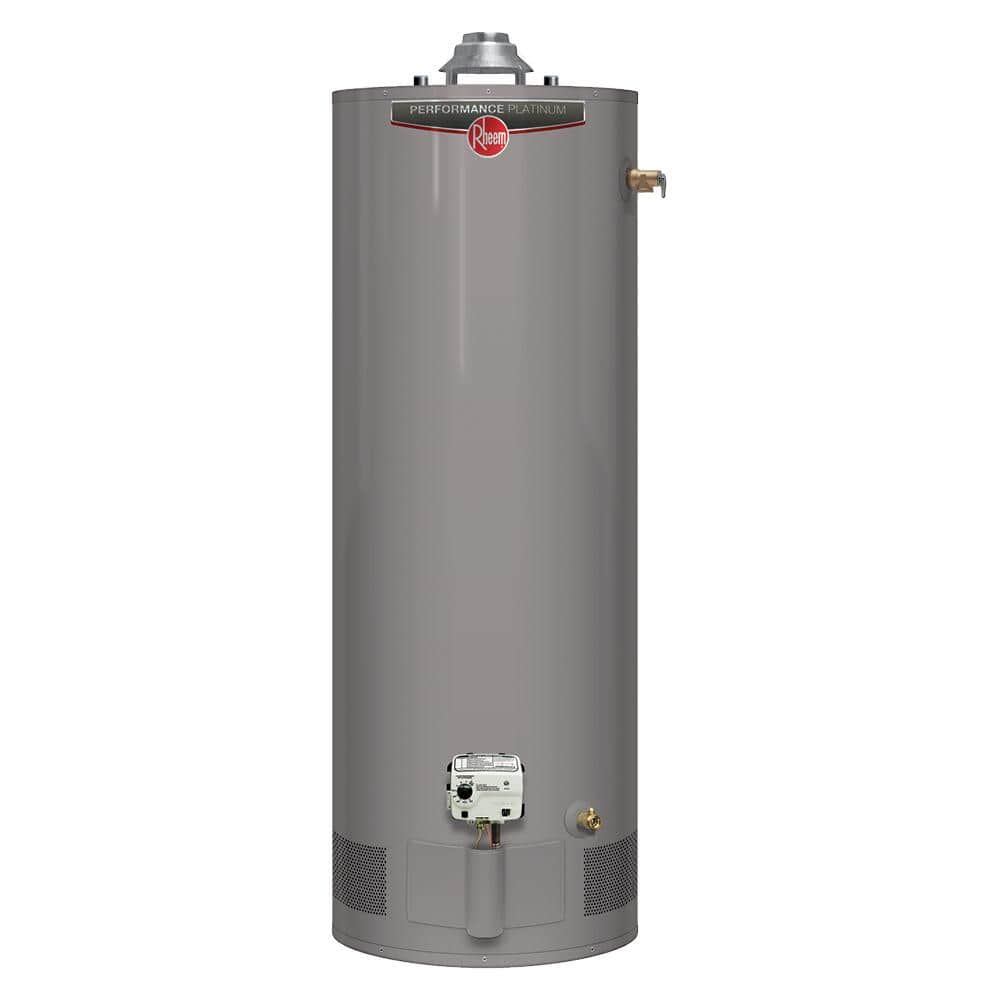
Credit: www.homedepot.com
Conclusion
Troubleshooting a Rheem Performance Platinum water heater doesn’t have to be overwhelming. Start by identifying the issue and follow the recommended steps to fix it. Regular maintenance helps prevent common problems and extends the heater’s lifespan. Always prioritize safety and consult a professional if needed.
A well-functioning water heater ensures reliable hot water for your home. Stay proactive, and small issues won’t turn into costly repairs. By understanding your water heater better, you can address concerns more confidently. Keep these tips in mind for smoother troubleshooting and efficient performance.

